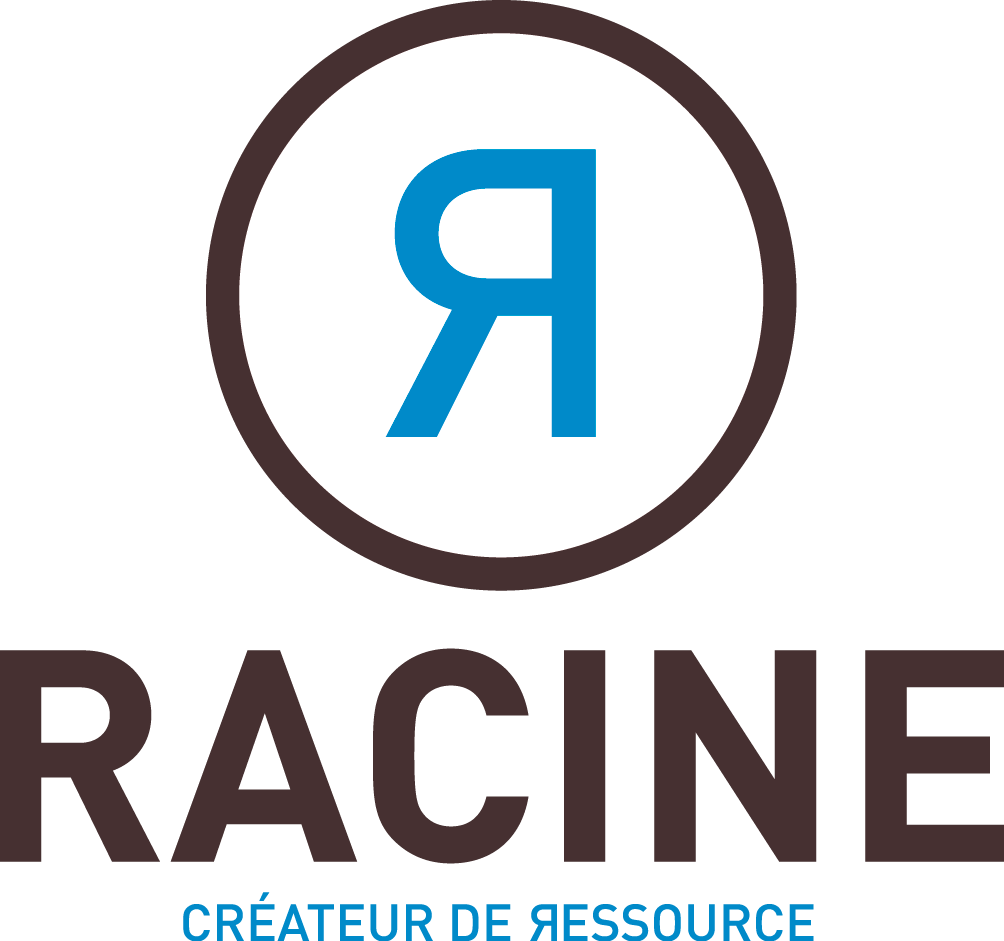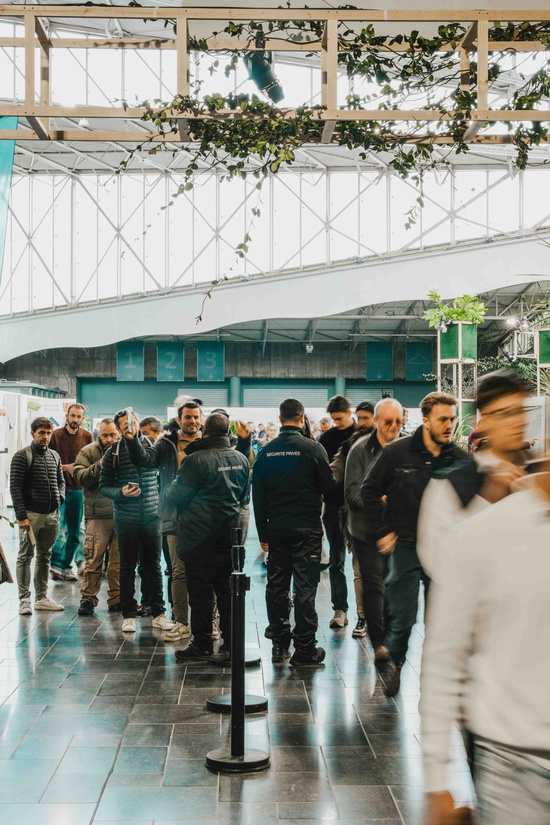Deciphering gardens: at Carré des Jardiniers 2023 rewilding is essential
The garden trends consultancy CHLOROSPHERE has deciphered how the four finalist gardens approach the theme of rewilding.
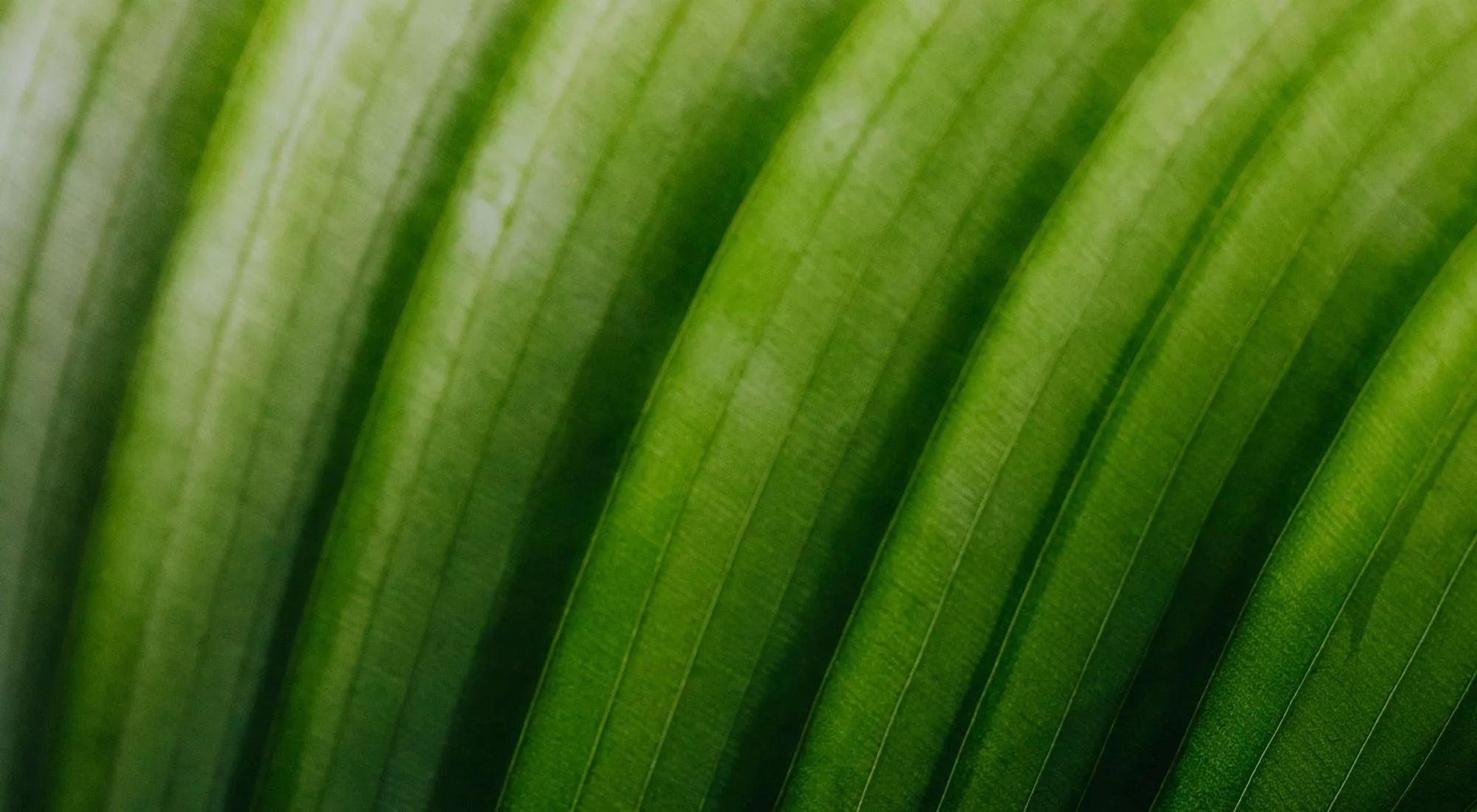
Families are gradually moving away from city centers because natural surroundings are sorely missing. To counteract this urban exodus, cities must reintroduce biodiversity into the streets, schoolyards, hollow spaces and town squares, while integrating existing trees and topography as well as stormwater management. This rewilding is necessary, which means that landscape architects are allotted the role of territorial ecologist. The garden trends consultancy CHLOROSPHERE, a partner of the Carré des Jardiniers 2023 landscaping contest, has deciphered how the four finalist gardens approach the theme of rewilding.
Antoine DE LAVALETTE, Master Gardener 2023 and creator of “L'im.pas.si.sage”
In this garden, winner of the Carré des Jardiniers 2023 competition, rewilding happens in a space capsule where the boundary between concrete and plants gradually blurs. In the heart of the city, rewilding adds a playful note to strolling inside a soothing cocoon, inviting you to curl up on a net that hangs above a flowerbed and relax in the arms of nature. The plant range is decidedly wild, and includes grasses, ferns and ornamental foliage. Antoine De Lavalette's approach is a fitting response for cities where every m² counts.
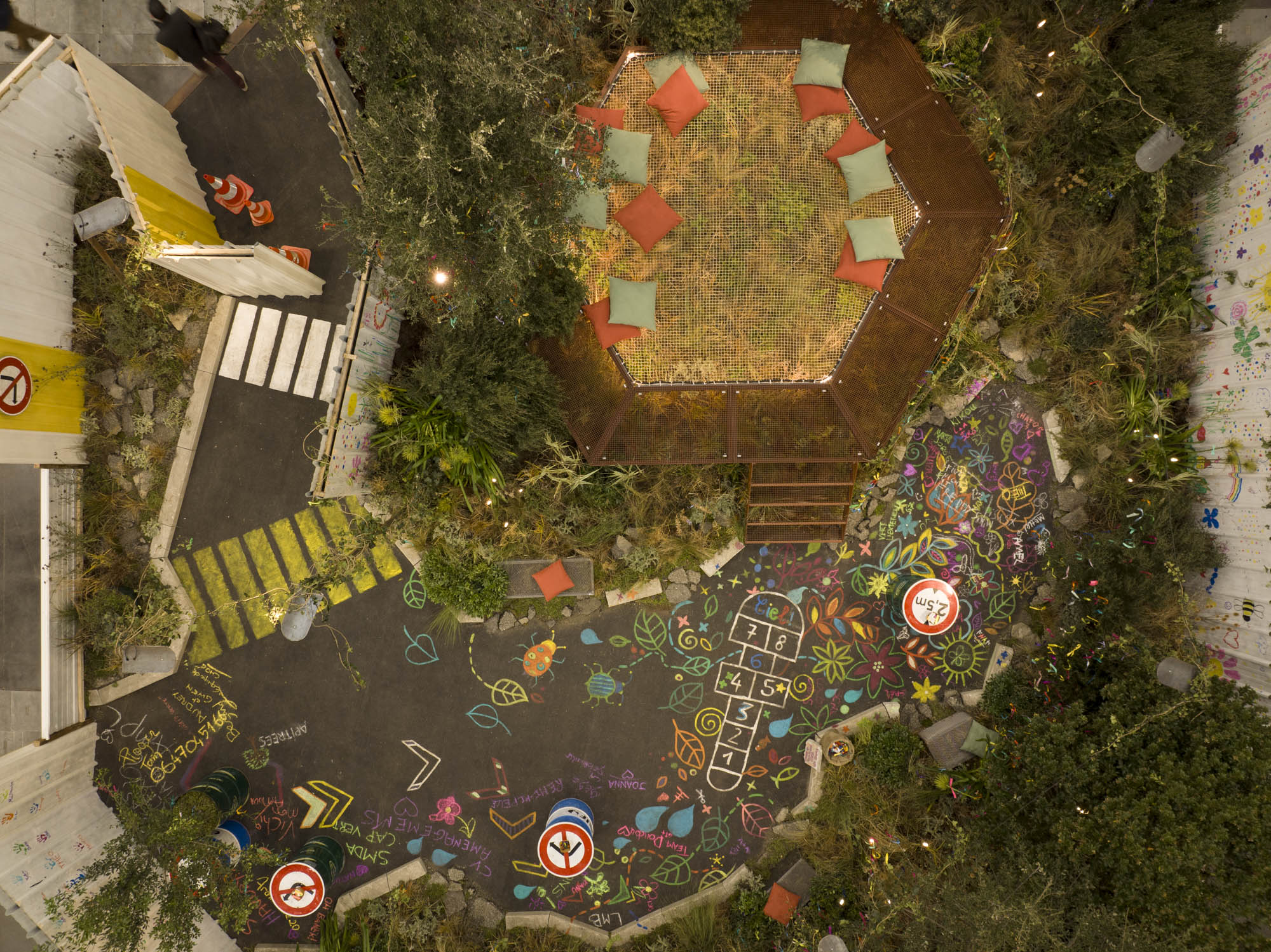
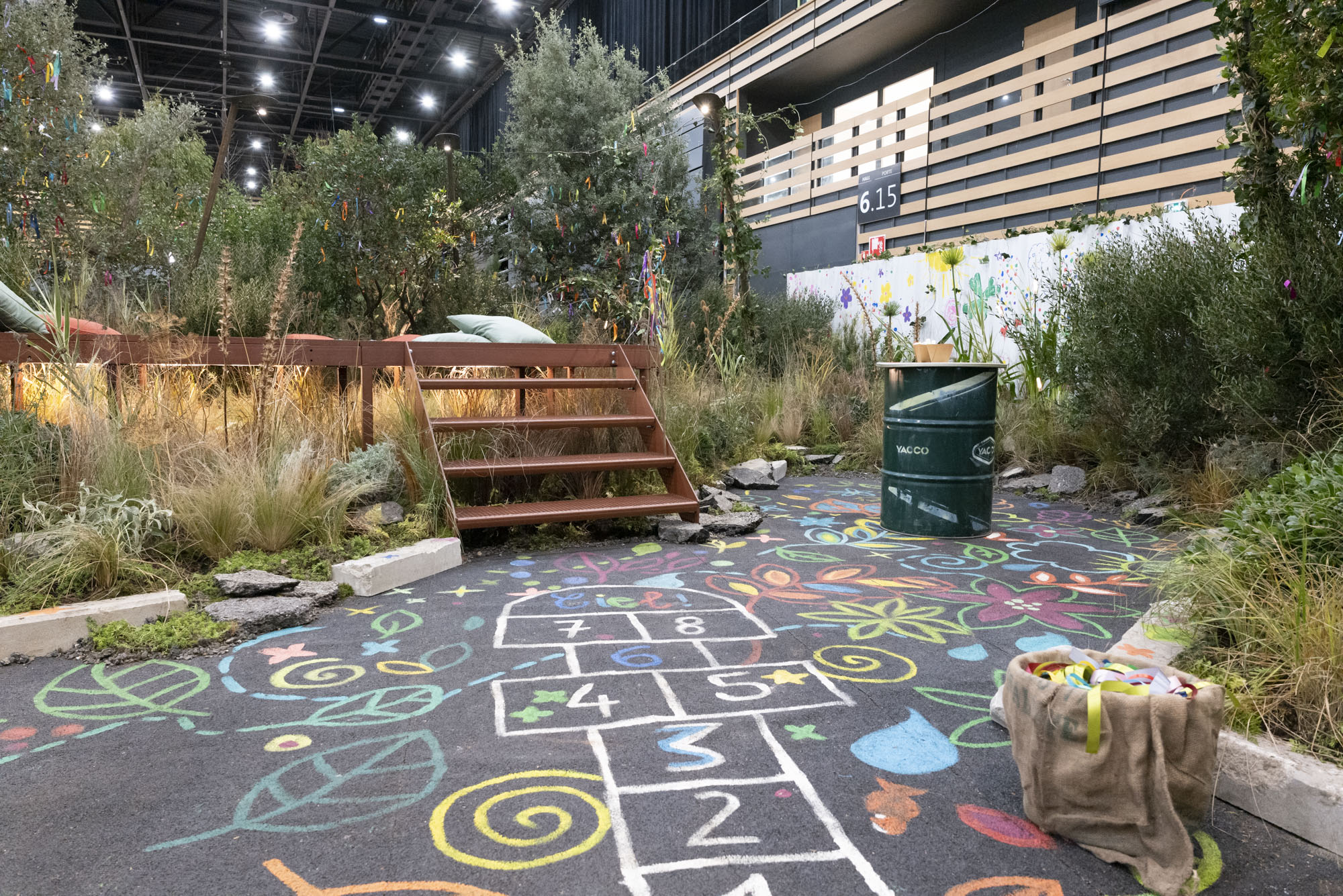
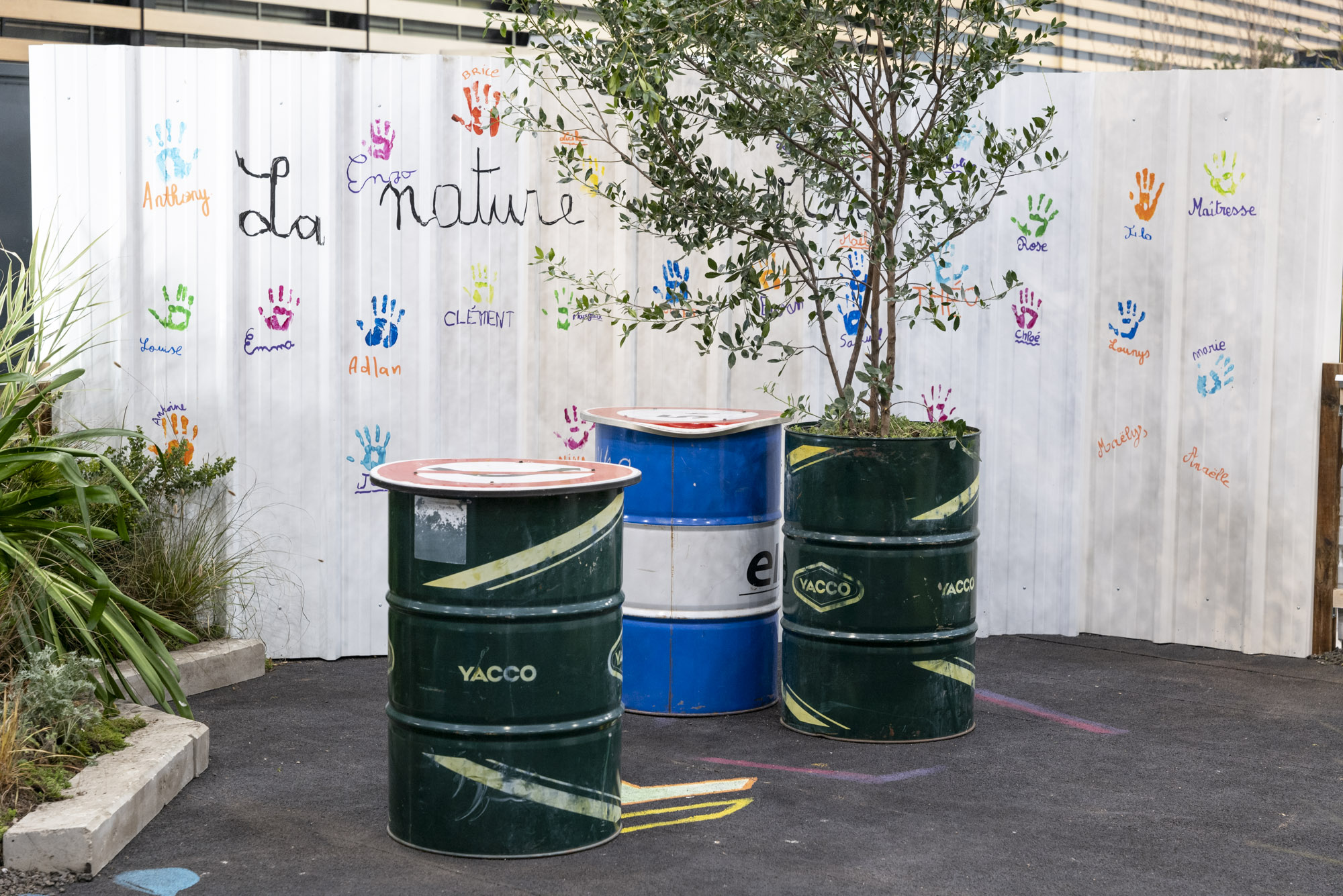
“Plants are a symbol of the rewilding of towns. In our space, passers-by leave a place of perpetual work to find refuge in an alley, but not the usual woeful alley, because this green cocoon is a place where you can escape from the city. Plants find their rightful place and rise in a green symphony. The path unwinds naturally as the plants, big and small trees regain urban ground. Passers-by find themselves immersed in living nature and are encouraged to become familiar with it by hanging wishes on branches, sitting on an openware seat while a few leaves drift by, and even playing above a lawn on a hanging net. This vision which might seem dystopian, nevertheless brings humans back to the heart of towns. Plants take people away from the humdrum of life, help them to reminisce and inevitably evoke something for everyone.”
Matthieu CARLA, creator of “Jardin Suspendu”
How can we satisfy residents’ desire for greenery when each one has their own vision of nature? Matthieu Carla rises to the challenge with style, proposing rewilding that allows everyone to find their own cocoon within a shared space. In the Jardin Suspendu, a Moroccan terrace is bordered by a hydroponic vegetable garden and a micro-forest. By subtly blending materials, volumes and plants, urban rewilding can be individualized. A winning strategy, awarded the "Coup de cœur des étudiants" (students’ favorite garden) prize at Carré des Jardiniers 2023 landscaping contest.

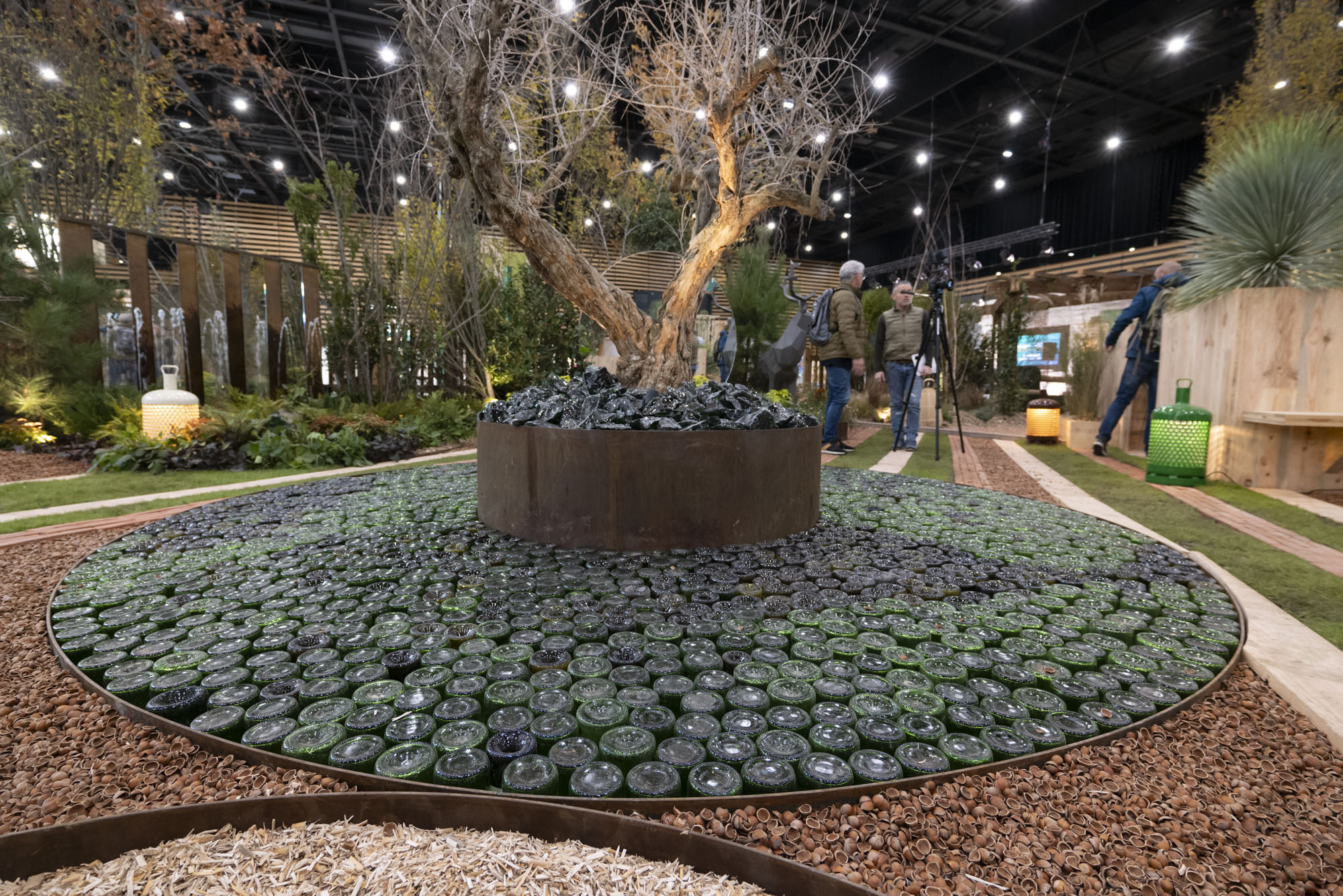
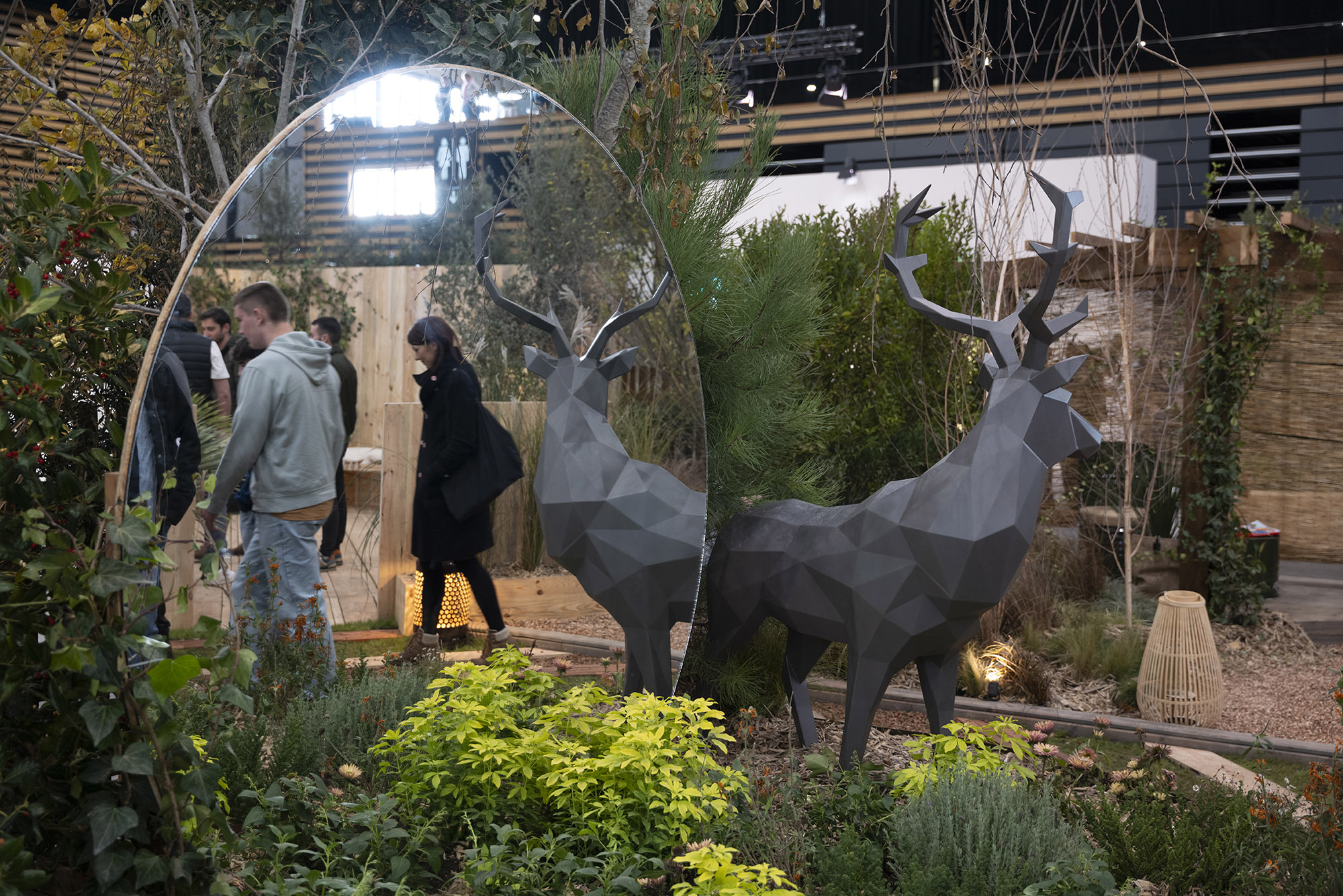
"There is a tendency to increase the density of urban spaces vertically. Roofs and terraces are becoming trendy spaces for developers and therefore for residents. Working on a small above-ground space in an urban ecosystem must rise to the challenge of combining aesthetics and functionality. For this creation, we imagined several terraces. Visitors rise from the 5th floor to seventh heaven through these hanging gardens. Use of the terrace is as varied as the tastes and desires of the residents as it ranges from a place to enjoy a barbecue to a real micro-forest. The building is delivered as a blank page where each person writes his or her own story while the landscape architect translates all these life stories into gardens.”
Vincent GRUNEWALD, creator of “L'Entre Deux Bruits”
Here, the microforest reigns majestically in Vincent Grunewald's rewilding strategy. The plant range, which consists of local species left to grow in semi-liberty, requires minimal maintenance, while remaining under control to preserve movement and rest areas. The idea is to rewild the space gradually by using plants with a high reseeding capacity, and over time to grow a genuine plant cocoon that attenuates city noise.

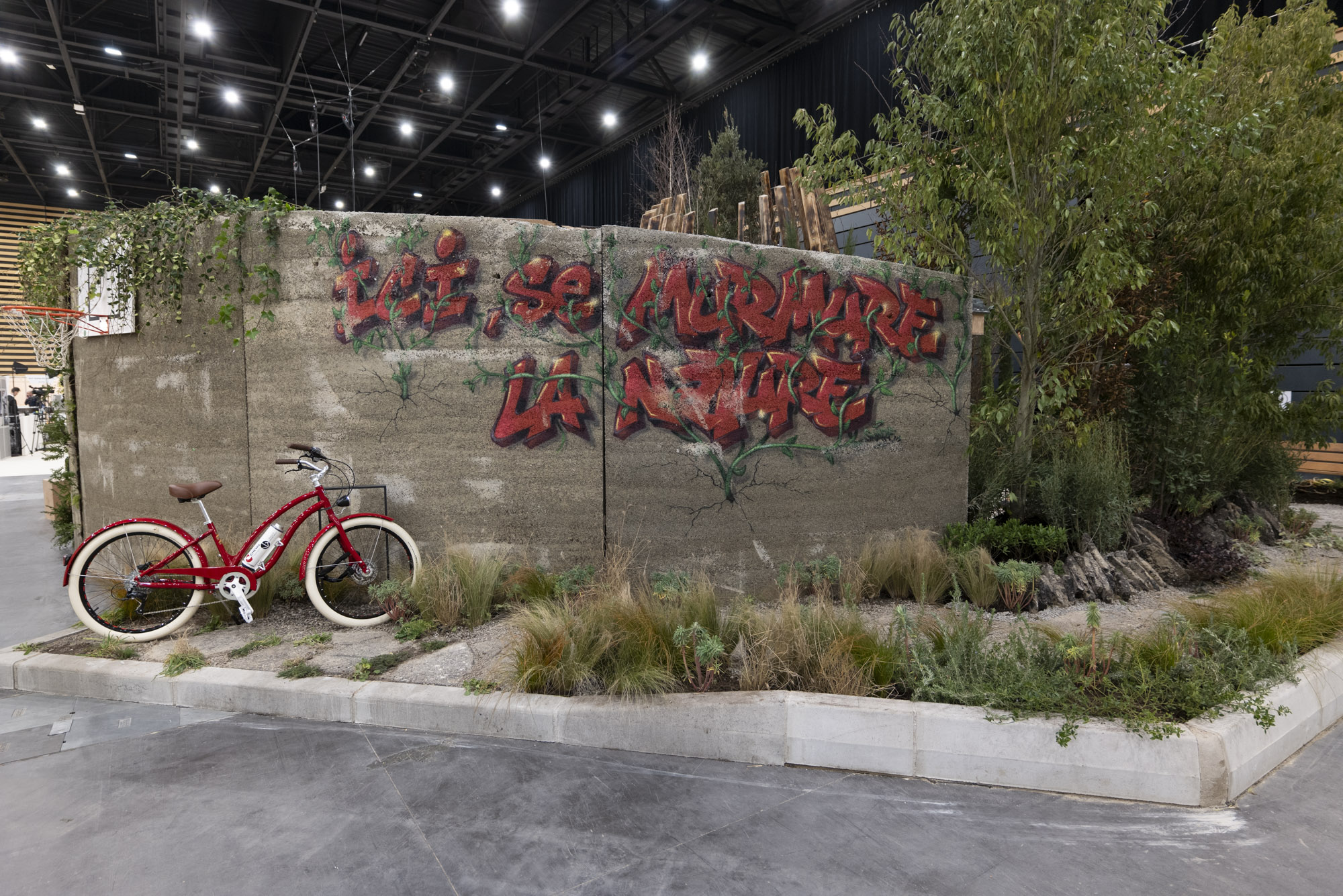
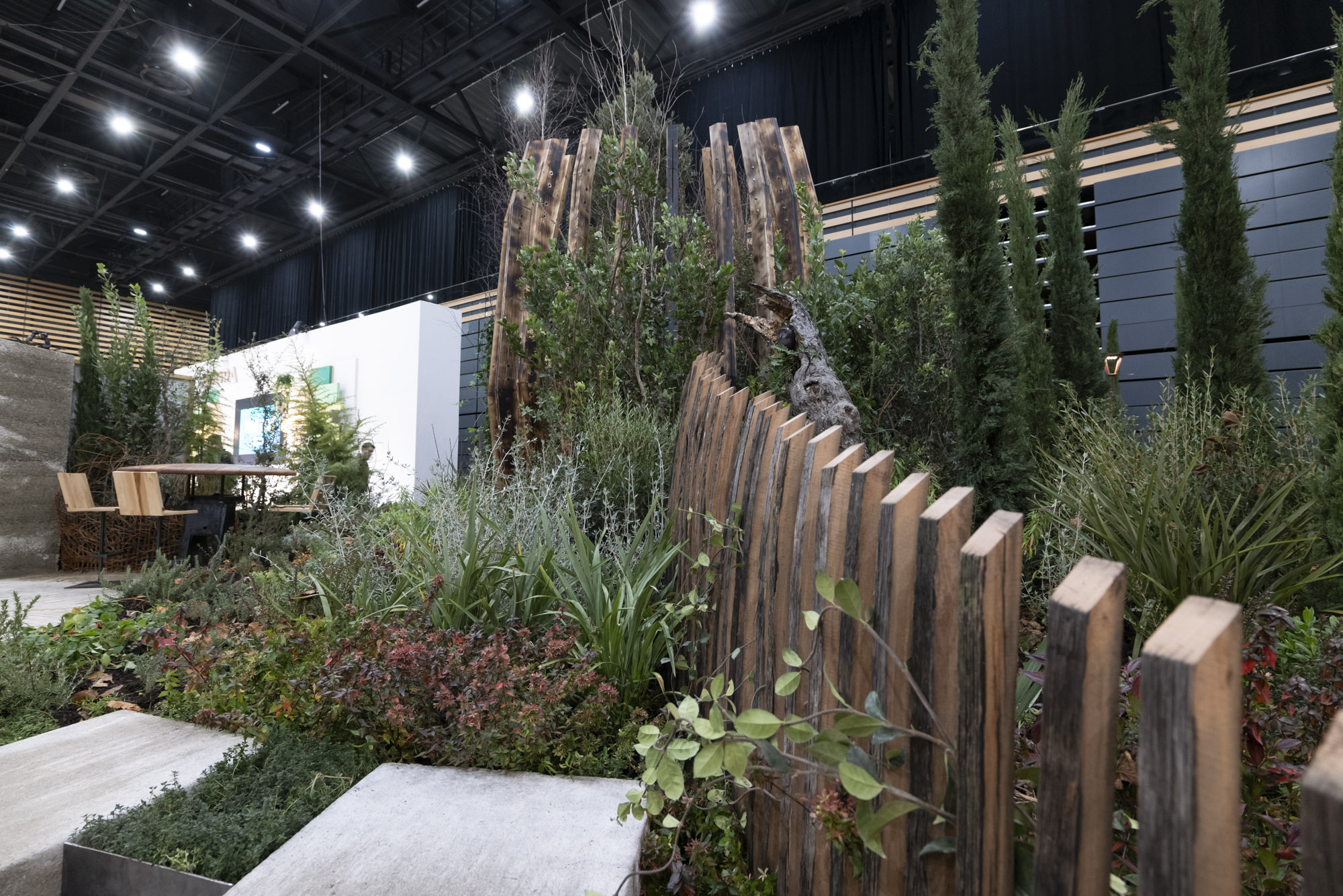
"Urban space is not expandable, and the vision of great parks and gardens that have shaped our cities is now impossible. However, every city has many small spaces that are not used enough or are used inadequately. Sometimes we cut down trees just to put up a building, even though the local residents might be attached to it. Trees are a symbol. For our project, we started with an existing tree, which became the focal point of a new layout. It is preserved and left in a natural context where it self-manages. All around, we use a range of plants that will evolve over time. Some species will disappear and others will take over. A soundproof enclosure wall ensures this interlude in the city. Outside is the frenetic hustle and bustle of the city, while in this plant bubble, calm is the order of the day and you can even hear the sound of birds.”
Simon FREITAG, creator of "La Vi'll'e de Demain"
The issue of climate change is at the heart of rewilding and Simon Freitag's garden offers a range of solutions that range from soil depaving to plant canopies to mitigate albedo effects. But it also focuses on the play of textures and fragrances that guide visitors through this convivial space where habitability takes precedence in rewilding. Everyone can make this green space in the heart of the city their own and give their senses free rein.
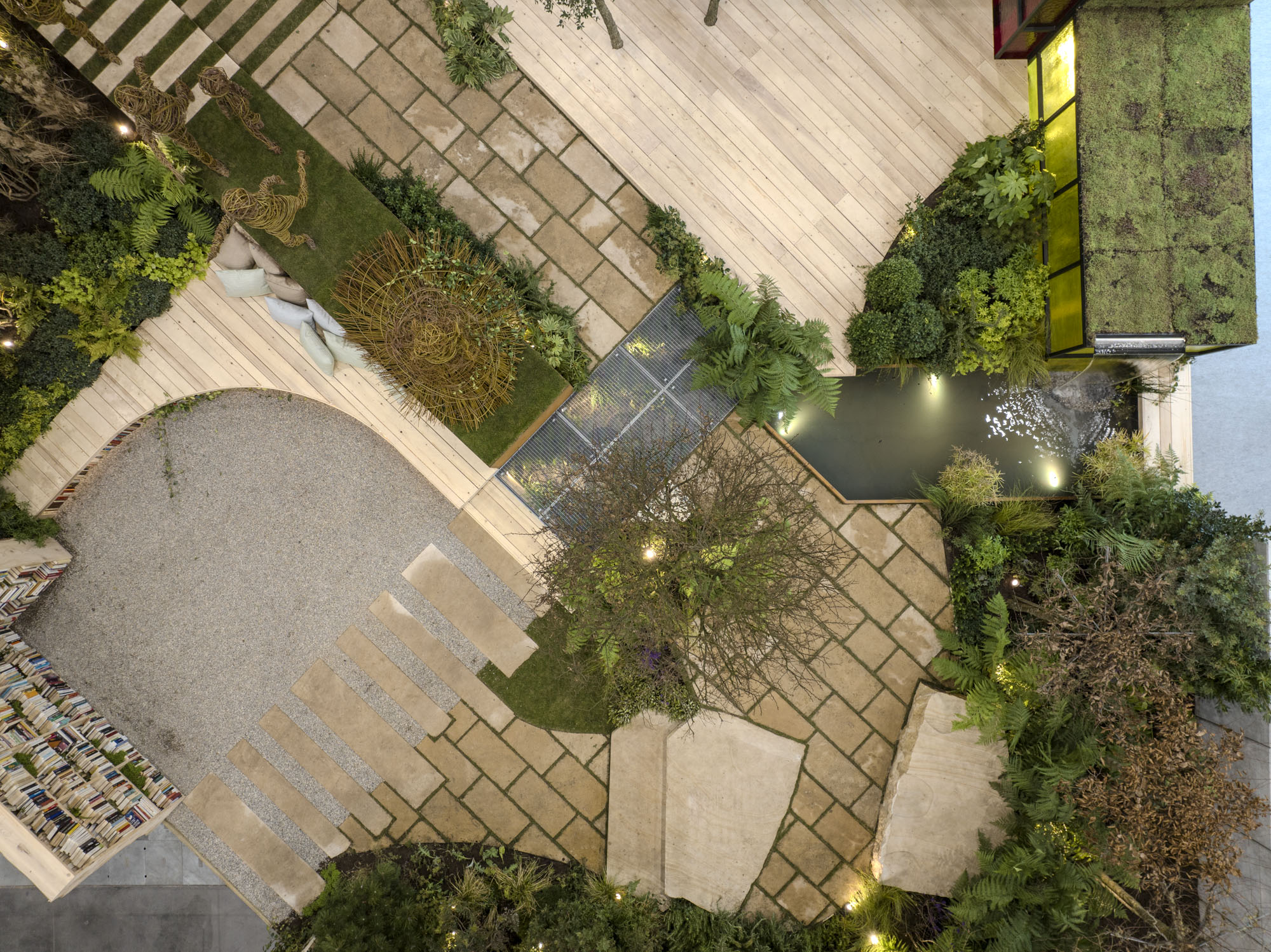
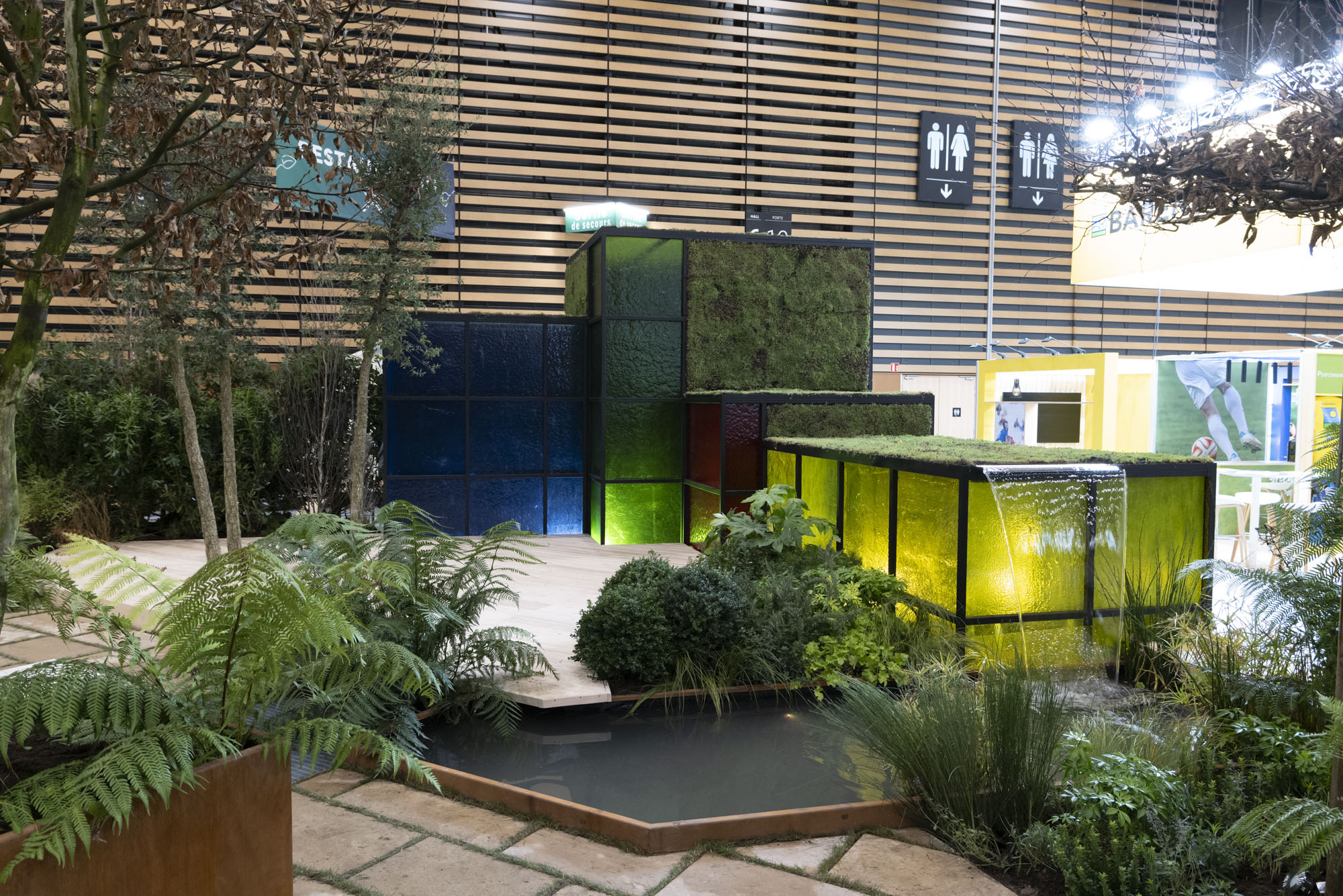
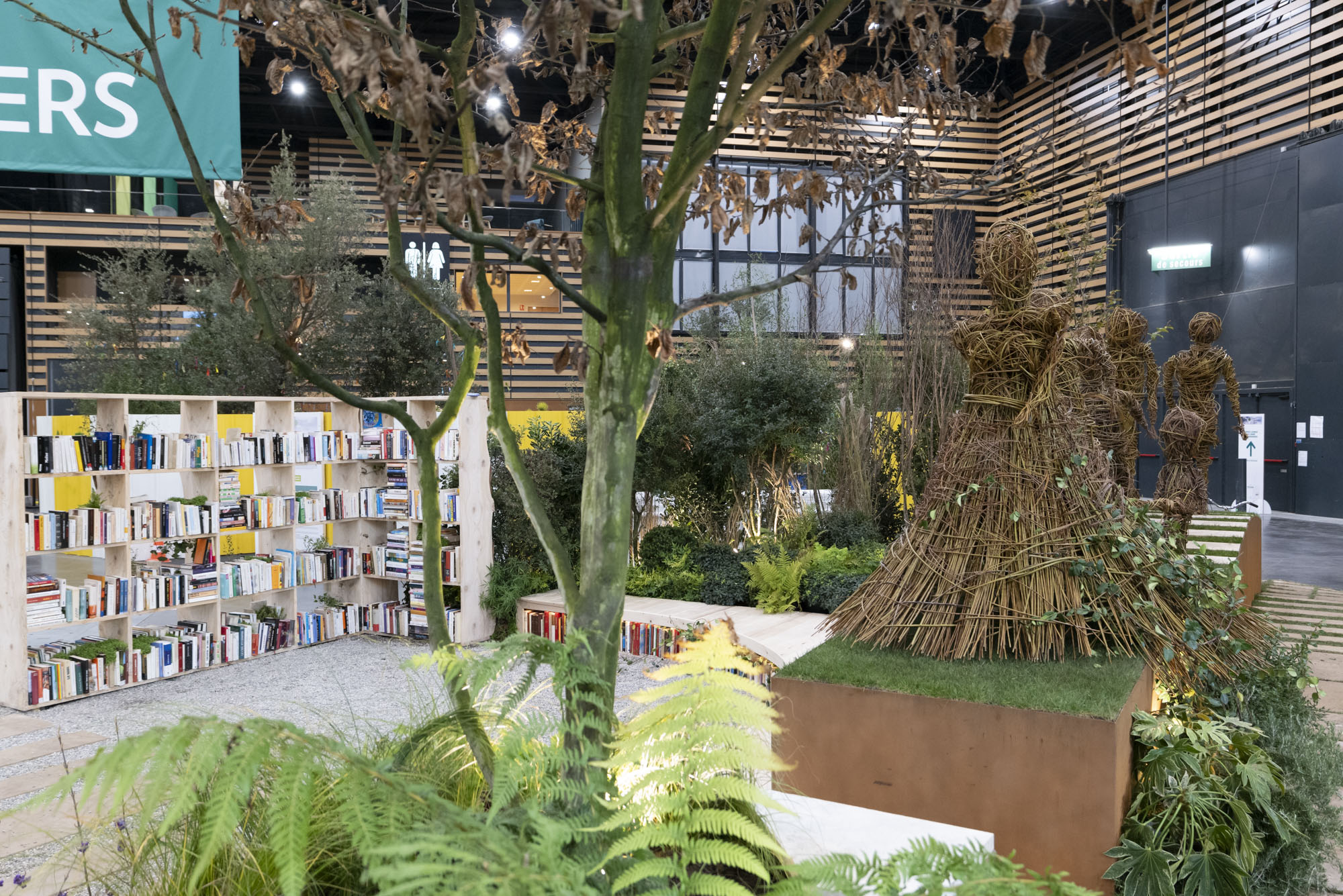
“To appreciate nature in a city you must start by stepping out of the crowd. When you enter this garden, your senses are awakened. Your curiosity is aroused by the free-access library, and then comes the game of the Japanese steps, reminiscent of piano keys. While you read, pedestrians become passers-by, then visitors, and even residents of this space. The city fades away, even the effects of the air vents of the metro station are subdued by the aromatic plants surrounding them. Today's landscape architect uses the mistakes of the past as inspiration for the future. The urban heat is reduced by islands of coolness formed by canopies of plants. At nights the materials restore the heat accumulated during the day so that no energy is wasted to heat public space. Light is incorporated into the material rather than adding street lamps, etc. In this garden that never ceases to stimulate the city with its colors, what is most important is to restore nature to its rightful place.”
CHLOROSPHERE, a plant trends consultancy
How will the landscaping world evolve over the next few years? That is the question that Manuel Rucar, head of CHLOROSPHERE and partner of Le Carré des Jardiniers, answers by identifying plant trends every year.
To find out more about 2024-2025 garden trends, listen to the talk he gave at Paysalia 2023 (French only).



